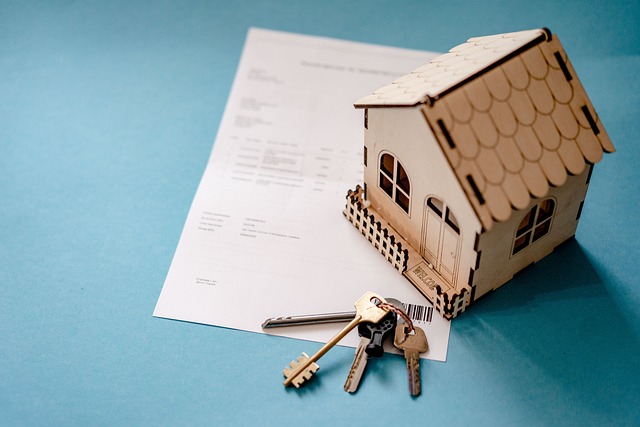2023 marked a significant year for the Annual Property Tax (APT) in Singapore, with adjustments reflecting the country's responsiveness to economic growth, property market dynamics, and fiscal policy shifts. The APT system, a cornerstone of Singapore's financial stability and real estate market health, is meticulously overseen by the Inland Revenue Authority of Singapore (IRAS), which employs comprehensive guidelines and advanced data analytics for valuation and taxation purposes. Investors and analysts are advised to stay informed on APT trends, as they significantly influence investment strategies and policy decisions. The APT's progressive rate structure ensures fairness and aligns with the nation's commitment to sustainable development and homeownership. Historical data shows a pattern of responsive APT rate adjustments in line with economic indicators, urban development initiatives, and demographic shifts. As Singapore continues to evolve its property tax framework within its Smart Nation initiative, predictive modeling becomes increasingly crucial for forecasting APT trends, incorporating real-time data analytics and machine learning to adapt to market changes. Future APT policies are expected to consider environmental factors, urban growth, and affordability, ensuring a sustainable economy and housing stability in line with the nation's broader economic goals.
Investigating the intricacies of property taxation within Singapore’s dynamic real estate landscape, this article delves into the prevailing trends of Annual Property Tax (APT). APT plays a pivotal role in the nation’s fiscal structure, reflecting economic conditions and real estate market dynamics. Through a comprehensive analysis that encompasses historical data, current economic influences, and predictive modeling, we unravel the trajectory of APT trends, offering insights into how these patterns may shape property tax assessments and investments in Singapore.
- Understanding the Framework of Annual Property Tax (APT) in Singapore
- Data Collection and Analysis Methodologies for Market Trends in APT
- Historical Trends and Evolution of Annual Property Tax Rates in Singapore
- Economic Factors Influencing APT Trends: A Deep Dive
- Impact of Real Estate Market Changes on Annual Property Tax Assessments
- Predictive Models and Future Outlook for Annual Property Tax in Singapore
Understanding the Framework of Annual Property Tax (APT) in Singapore

In Singapore, the Annual Property Tax (APT) is a recurrent tax levied on the ownership of properties, which serves as a significant component of the country’s property tax framework. The APT in Singapore is calculated based on the value of the property, with different rates applied to various classes of properties, such as residential, commercial, and industrial. The assessment of value is governed by the Inland Revenue Authority of Singapore (IRAS), which employs a progressive rate structure to ensure equitable taxation according to the property’s worth. Property owners are required to pay their APT annually, with payment due by February 1st following the end of the tax assessment year. The tax is intended to generate revenue for public services and infrastructure while reflecting the government’s commitment to maintaining a stable and sustainable property market. Understanding the specific value assessments and applicable rates requires familiarity with the IRAS guidelines, which provide detailed information on how properties are valued and the varying tax rates that apply. This framework ensures transparency and fairness in the APT system, making it an integral aspect of real estate financial planning within Singapore’s property market landscape.
Data Collection and Analysis Methodologies for Market Trends in APT

In the realm of real estate finance, understanding market trends for Annual Property Tax (APT) in Singapore is pivotal for investors and analysts alike. The data collection process for APT market trends involves a comprehensive approach that encompasses various sources and methodologies to ensure accuracy and relevance. Government databases such as the Inland Revenue Authority of Singapore provide official figures on property tax assessments, which serve as the foundation for trend analysis. These datasets are augmented with additional data from real estate transactions, demographic shifts, and economic indicators to construct a multi-faceted view of the market. Advanced statistical techniques, including time-series analysis and regression models, are employed to identify patterns and forecast future trends. Machine learning algorithms also play a significant role in analyzing large datasets, offering predictive insights that can inform investment decisions and policy formulation. By leveraging these sophisticated methodologies, stakeholders can gain a deeper understanding of APT market dynamics and make informed strategic decisions within the Singaporean property tax landscape.
Furthermore, the analysis extends beyond mere quantitative metrics by incorporating qualitative factors such as changes in government policies, urban development projects, and shifts in consumer preferences that could influence APT liabilities. Geographic Information Systems (GIS) are utilized to map out the spatial distribution of property taxes, revealing trends related to property values and tax burdens across different regions of Singapore. This geospatial analysis complements the traditional economic indicators, providing a more nuanced perspective on market conditions. By combining these diverse sources of data with robust analytical techniques, market participants can stay ahead of the curve, anticipating shifts in APT liabilities and making proactive decisions that align with the evolving tax landscape in Singapore.
Historical Trends and Evolution of Annual Property Tax Rates in Singapore

Singapore’s Annual Property Tax (APT) system has evolved significantly since its inception in 1960. Initially, the rates were kept relatively low to promote property ownership and to ensure affordability for the majority of the population. Over the years, the rates have been adjusted to reflect economic conditions and to support various housing policies aimed at sustainable development and homeownership among residents. The tax structure is designed to balance the need for revenue with the goal of encouraging a healthy property market. Historical trends show a gradual increase in the tax rates over time, with the rates being sensitive to broader economic indicators such as inflation and GDP growth. This sensitivity has allowed the tax to remain fair and progressive, adapting to the changing demographics and housing needs within Singapore. The tax framework also incorporates differentiated rates for various types of properties, reflecting the government’s commitment to making property ownership accessible while managing public expenditure effectively. Throughout its evolution, the Annual Property Tax in Singapore has been a key instrument in shaping the real estate landscape, influencing investment patterns and contributing to the overall economic stability of the nation.
Economic Factors Influencing APT Trends: A Deep Dive

In the dynamic economic landscape of Singapore, the Annual Property Tax (APT) trends are closely monitored and influenced by a myriad of interrelated factors. The APT, as a component of property ownership in Singapore, is subject to fluctuations that mirror the broader economic conditions. Economic growth, property market performance, and changes in government fiscal policies all play pivotal roles in shaping APT trends. Fiscal policies, such as property cooling measures aimed at curbing speculation or encouraging home ownership, can lead to immediate or deferred impacts on tax rates or exemptions. The Singaporean government’s stance on economic stimulus or austerity measures also affects APT, with taxes often adjusted to align with these overarching economic objectives. For instance, during periods of economic expansion and rising property values, the government might increase APT rates to cool down the market. Conversely, in times of economic downturn or when aiming to stimulate the property market, APT adjustments may take a more lenient stance. These fiscal instruments are designed to maintain a balanced economy, ensuring that the real estate sector remains healthy and sustainable without overheating. As such, stakeholders must stay attuned to the nuances of Singapore’s economic policy and broader market conditions to accurately forecast APT trends and their implications for property investment and ownership in Singapore.
Impact of Real Estate Market Changes on Annual Property Tax Assessments

The real estate market in Singapore undergoes fluctuations that can significantly influence the annual property tax assessments for residents and investors alike. As the market experiences shifts, whether it be an increase in property values or a change in the economic landscape, these dynamics are factored into the assessment of Annual Property Tax Singapore. The Inland Revenue Authority of Singapore (IRAS) determines the taxable value of properties annually, which is a key element in calculating the property taxes. This assessment considers current market valuations, ensuring that taxpayers contribute according to the prevailing market conditions. For instance, if there’s an upward trend in property values due to high demand, this could lead to higher taxable charges for owners. Conversely, a cooling measure or a downturn in the market might result in lower assessments, providing some relief to property owners during economic challenges. Staying abreast of market trends is crucial for property owners to anticipate changes in their annual tax obligations and to plan financially accordingly within the context of Singapore’s dynamic property landscape.
Predictive Models and Future Outlook for Annual Property Tax in Singapore

In Singapore, the property tax landscape is subject to dynamic changes influenced by a myriad of economic and demographic factors. Predictive models play a pivotal role in forecasting trends for the Annual Property Tax, which is levied on the assessed value of properties. These models integrate various data points, including real estate market performance, property valuation shifts, and broader macroeconomic indicators, to project potential adjustments in tax rates. The Singaporean government employs these models to anticipate future revenue implications and to align tax policies with national economic objectives. As the country continues to develop its Smart Nation initiative, the integration of advanced data analytics and machine learning techniques is expected to refine predictive accuracy, ensuring a responsive fiscal framework that adapts to market conditions in real-time.
Looking ahead, the outlook for Annual Property Tax in Singapore is shaped by ongoing urban development projects, population growth trends, and policy measures aimed at maintaining property affordability while managing demand. The government’s strategic initiatives, such as the Total Debt Servicing Ratio (TDSR) framework, serve to regulate lending practices and prevent over-leveraging, which in turn influences tax liability projections. As Singapore charts its course towards a sustainable and livable future, the property tax system is expected to evolve, potentially incorporating environmental considerations and adaptive tax rates that respond to market dynamics. This forward-thinking approach underscores the nation’s commitment to fostering a resilient economy and a stable housing market.



